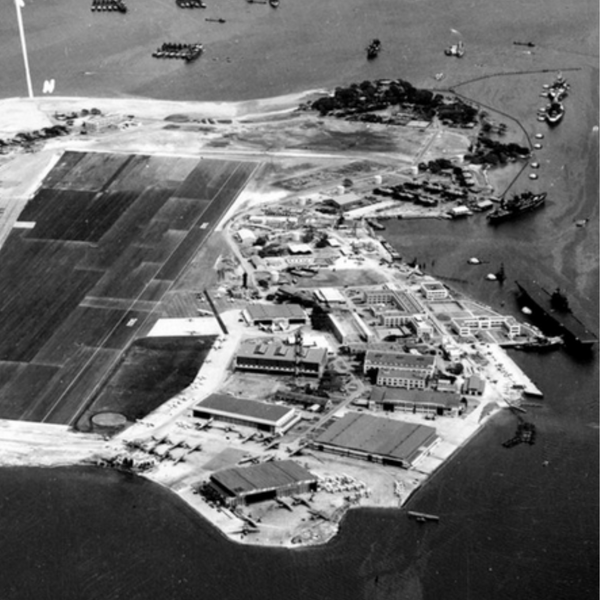The Bombing of Pearl Harbor
Jan 23, 2025

The bombing of Pearl Harbor on December 7, 1941, forever altered the course of history—and my family played profound roles in that pivotal moment. My grandparents, Kenneth and Eleanor, embodied the resilience and bravery that emerged amid the chaos of that day, leaving an indelible mark on not only our family but history itself.
Kenneth Carmichael, known as "the father of cryptology," played a pivotal role in the history of military intelligence and cryptology. Stationed at a critical radio station on the island of Oʻahu, he was part of a small, pioneering cadre of cryptologists who worked tirelessly to ensure the most up-to-date radio traffic reached the appropriate military leaders.
On December 7, 1941, Kenneth was on duty during the midnight watch, which began at 0000 hours. It had been an unusually busy shift, with traffic heavier than usual, and he kept the "scoop" on longer to monitor the situation. The type of traffic intercepted bore the same markers as patterns observed during previous Japanese advances into Indochina—a clear sign of impending action.
As dawn broke, the skies suddenly filled with Japanese aircraft, heading toward their targets at Pearl Harbor and nearby military installations. The planes flew near Kenneth's building, their path close but not directly overhead. The enemy dropped bombs, one of which struck a hangar filled with planes, and conducted strafing runs that terrorized the surrounding area. Kenneth rushed to his station as sirens wailed and bombs fell, working tirelessly to interpret enemy transmissions. His efforts on that day—and in the months and years to follow—were instrumental in decoding critical information that bolstered the Allied war effort.
Kenneth's work extended far beyond that harrowing day at Pearl Harbor. He became a cornerstone of naval cryptologic training, mentoring and guiding thousands of future cryptologists. For his groundbreaking contributions to the field, Kenneth Earl "Mike" Carmichael, USN (Ret), left an enduring legacy that shaped the future of military intelligence. On January 13, 1993, Building 3744 at Corry Station was dedicated as Carmichael Hall in his honor.
Meanwhile, my grandmother Eleanor was also at Pearl Harbor, but her battlefield looked very different. She volunteered at the medical facility. As the first bombs struck, the building became a target, and chaos erupted. Eleanor and others found themselves surrounded by explosions, wounded sailors, and minimal medical staff. Despite the panic and confusion, she and the others refused to succumb to fear. Gathering whoever could still move, the volunteers and medical staff led them through the confusion and quickly shifted to Building 55—which quickly became the main receiving station for the wounded. She and the staff worked tirelessly, using scraps of torn uniforms for bandages and rationing medical supplies to ensure they had enough to triage the rounded as they kept coming in.
Seventy-three years later, I found myself walking into Building 55 as the Training and Readiness Officer—the very same building my grandmother and many others had transformed into a place of refuge during the chaos of the Pearl Harbor attack. The significance of that moment was not lost on me. As I walked through those halls for the first time, the air felt thick with history, as though the very walls whispered their stories to me. The echoes of hurried footsteps and the resilience of those who refused to surrender to fear seemed to fill the space around me. These halls had witnessed some of the darkest and bravest hours of our nation’s history, yet they also stood as a testament to the unbreakable strength of the human spirit.
Sitting at my desk in that storied building, I often thought of my grandfather, Kenneth, at the radio tower, hunched over his equipment, decoding enemy communications. I imagined his mind racing, the pressure mounting with every passing moment as he worked tirelessly to interpret transmissions. I often tried to picture what he might have felt in those moments as he worked to decipher these coded messages. Did he realize the legacy he was creating and the impact his efforts would have not only on the war effort but on future generations of cryptologists? The thought that his unassuming courage and relentless determination helped shape the course of history filled me with a deep sense of pride and gratitude. His story wasn’t just one of professional achievement—it was the power of perseverance that rose in even the direst circumstances.
What happened on that eventful day is not just a historical event in our family—it is a testament to the resilience and bravery of the human spirit. It is a reminder that even in the face of unimaginable darkness, there is light to be found in the strength and sacrifice of ordinary individuals who rise to meet extraordinary challenges. For me, their story serves as both an inspiration and a guiding principle, a reminder of the values I strive to live by every day: dedication, service, and the unyielding belief in the power of humanity to overcome adversity.
Being part of Building 55’s modern mission felt like a continuation of their legacy. In some ways, I was walking in their footsteps, doing my part to ensure readiness and resilience in a new era of challenges. It was a privilege not only to honor their memory but also to carry forward the spirit of their sacrifice and courage into the work I do today.

